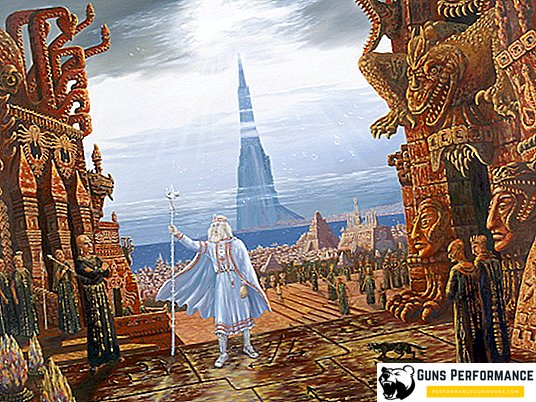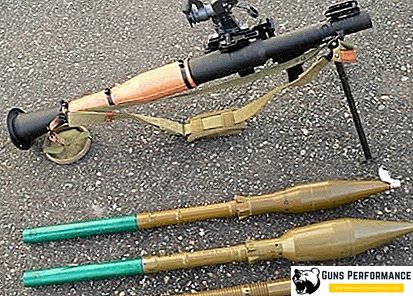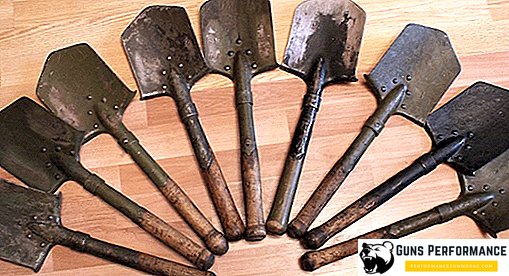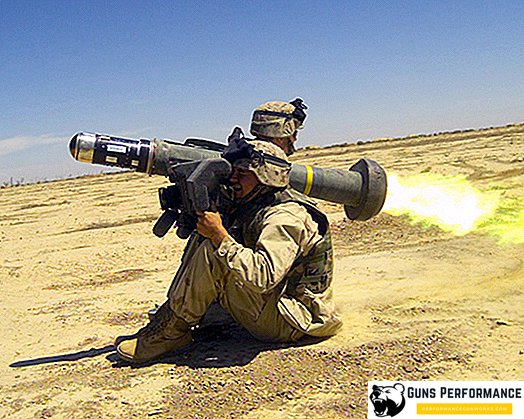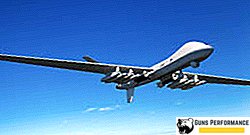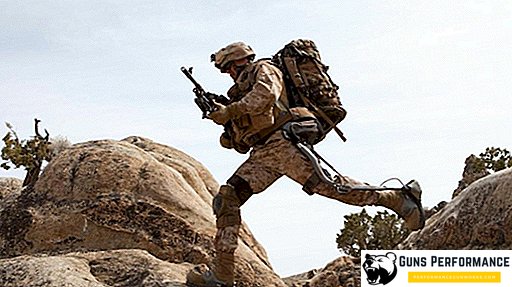Despite the increased role of aviation in military conflicts, which we have seen over the past decades, artillery remains a very important factor, very often decisive outcome of hostilities. This is especially true for self-propelled artillery, they really justify the title of "god of war."
At present, in many countries of the world, work is underway to create new self-propelled artillery systems (SAU) and modernize the old ones. Another popular area is the development of new types of ammunition, the creation of guided projectiles, increasing their power and firing range. Progress in the development of loader systems, increasing accuracy and mobility, make ACS a very effective tool that can handle many tasks.
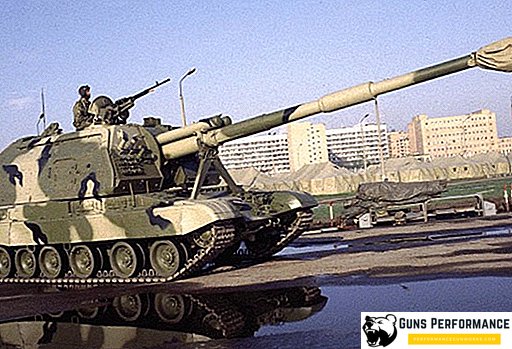
A self-propelled gun mount is a cannon (often of a large caliber) mounted on a tracked or wheeled chassis used to directly support infantry and armored vehicles.
Story
The history of self-propelled guns begins at the dawn of the XX century. Especially rapidly developed this type of armored vehicles during the world wars. From the tank SAU differs in the nature of the tasks they solve, as well as its design - the balance of firepower, mobility and security.
Compared with a tank, self-propelled units have weaker protection and much higher firepower.
In the Soviet Union, after the war, work on the creation of new self-propelled units was suspended. At that time, more attention was paid to various rocket systems and aviation. Only in the late 60s, the development of several self-propelled artillery systems began. Some of them are still used today ("Acacia", "Tulip", "Hyacinth").
The Acacia ACS, which had a caliber of 152 mm, was in no way inferior to similar armaments of a potential enemy until the mid-70s, but then the NATO countries began developing a new 155-mm howitzer that had a firing range higher than that of Soviet weapons. Enemy artillery had the opportunity to fire with impunity on the second echelon of troops, to destroy military equipment, which had not yet reached the front line.
In the USSR, work is started on the creation of the next-generation ACS, with characteristics that would not be inferior to Western counterparts. Work on the creation of a new, 152-mm howitzers, begin immediately in several design offices.
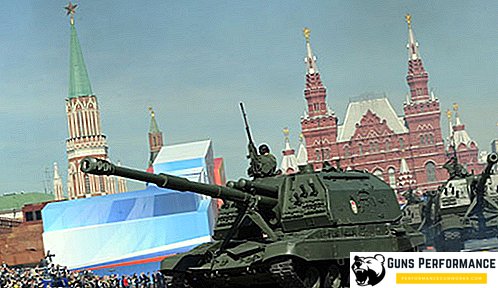
In 1980, the designers were given the official assignment to create a new 152-mm self-propelled gun. The new machine was named "Msta-S", it had to replace the 152-mm self-propelled gun "Acacia" that was outdated at that time.
In 1983, the prototype was ready, and next year it was sent for testing. Initially, the car was made on the basis of the main T-72 tank, but the tests revealed significant shortcomings of such a solution, and the most important of them was the strong buildup of the gun during the shooting. It was decided to replace part of the elements of the undercarriage of an artillery installation by those used on the T-80 tank. Such a solution has largely eliminated this problem.
In 1986, the state tests began. Howitzer "Msta-S" in 1989 was put into service. In 1986, the Msta-B 2A65 towed gun, which had a similar swinging part, was also put into service. The following year, mass production of 2A65 at the Motovilikhinsky plants began. 2A65 "Msta-B" is still used by the armies of the former Soviet republics, these guns were released more than 1,200 units.
In 1985, there was an attempt to put this self-propelled gun on a wheeled chassis. The basis for the ACS was to become a KrAZ-6316 truck. However, the tests showed many shortcomings of this solution and refused to work further.
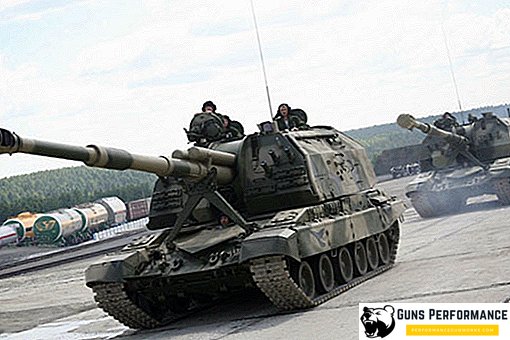
A special simulator was created to train the calculations of the new self-propelled gun.
For the production of self-propelled guns, a new plant in Sterlitamak was created, its production began in 1988, that is, before official adoption. After the collapse of the USSR, production was transferred to the Ural Transport Engineering Plant. In 1998, one ACS cost $ 1.6 million.
Later, the artillery installation was modernized, and it was planned to significantly increase its firing range. The new modification was named "Msta-SM". The range of high-explosive fragmentation projectile increased to thirty kilometers, and the active-jet exceeded forty kilometers. The rate of guns increased 1.4 times.
Many of the developments and design solutions that were created during the work on the Msta-SM self-propelled guns found their use in designing the new generation self-propelled guns, the Coalition.
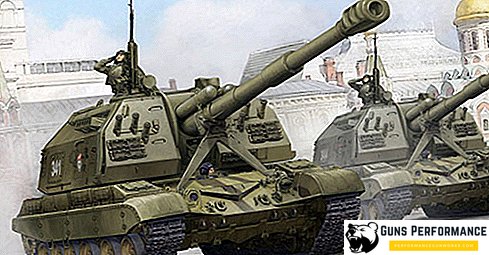
At the same time, work was being done to upgrade the Msta-S howitzers. These guns were actively used during operations in the North Caucasus. It became clear that the system of control howitzer fire does not meet the requirements of the time. In 1998, an automated fire control system was installed on the machine, and by 2002, the development of special software was completed, which could correct shooting in real time. The cost of the new MUST-S SAU has grown to three million dollars. There were also attempts to create a new car with a 155 mm caliber cannon, which are used in the NATO countries.
Another modernization of the car was undertaken by the TsKB Titan in 2012. Msta-S received a new fire control system, navigation instruments, the rate of fire was increased to 10 rounds per minute. Self-propelled gun received a new important opportunity - "firestorm". The target is covered simultaneously with several shells fired at different trajectories. In 2012, state tests of this modification were completed, and as early as the following year, 35 units entered the troops.
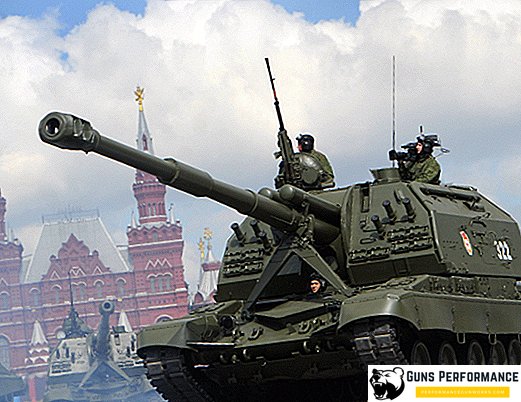
Currently, Msta-S is in service with seven countries. Most of these machines today in the Russian army. In second place is Venezuela, and in third place is Ukraine. In Russia in 2014, there were about 600 of these machines, 150 of which were preserved.
The self-propelled howitzer "Msta-S" significantly exceeds the guns of the previous generation ("Acacia"), it has a greater range of fire, rate of fire, more powerful ammunition. But It should be noted that "Msta-S" is more difficult to manage and maintain, and therefore it is rather difficult to prepare an artillery crew.
Description of Savushka
The Msta-S self-propelled howitzer was designed to destroy enemy artillery, its armored vehicles and anti-tank weapons, staffs and other command and control points, destroy fortifications, and also destroy enemy tactical nuclear weapons. This is a highly mobile complex that can, in a short period of time, deliver powerful blows to the enemy and rapidly retreat from retaliation.
ACS can fire from closed positions and direct fire. The gun can be used in mountainous terrain, the angle of elevation of the gun barrel (up to + 50 °) allows you to do this. Ammunition that is in the ammunition can be used, as well as to submit shots that are on the ground.
Msta-S is a heavy howitzer (over 40 tons). The fighting compartment is located in the middle part of the vehicle, the command and control compartment is located in the forward part, in the rear part there is a power compartment. The hull as a whole repeats the hull geometry of the T-72 tank, but the booking of howitzers is much weaker.
The tower is located gun 2A64, as well as a place for the crew members: the commander of the car, the gunner and two loaders. Commander's place is provided with a rotating turret. Also in the tower are sighting devices: a panoramic sight (1P22) and a sight of direct pickup (1 P23).
On the roof of the tower is a 12.7 mm machine gun. It is controlled remotely. The loading is semi-automatic, it provides 7-8 shots per minute if internal ammunition is used, 6-7 shots per minute - when feeding ammunition from the ground. Ammunition includes 50 shots and is in the tower.
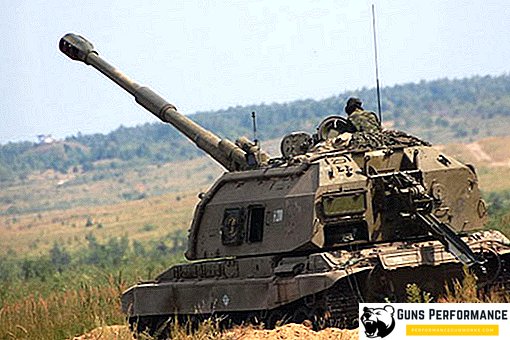
In the stern of the machine is a diesel 12-cylinder engine V-84A, as well as elements of the transmission. The engine can use six different types of fuel. The undercarriage is in many ways similar to the undercarriage of the T-80 tank.
Msta-S can use several types of high-explosive and active-reactive projectiles, cluster munitions, as well as a variety of guided and corrected projectiles. You can also fire special ammunition that is used to set up communications interference. The ACS can use Krasnopol-M1 guided projectiles for firing, which are guided along a laser beam.
The howitzer is equipped with an automated guidance system, as well as a guidance restoration system immediately after the fired shot.
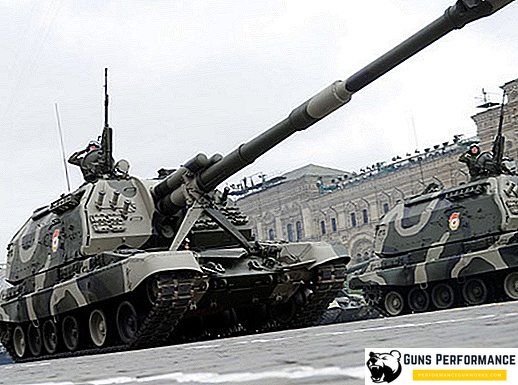
Specifications
Below are the main TTH SAU "Msta-S".
| Specifications | 2S19 "Msta-S" |
| Length with gun, mm | 11917 |
| Case length, mm | 6040 |
| Width, mm | 3584 |
| Height mm | 2985 |
| Track, mm | 2800 |
| Clearance, mm | 435 |
| Armament | 152-mm rifled howitzer 2A64 (50), machine gun NSVT (300) |
| Maximum firing range, km | 24,7 |
| Minimum firing range, km | 6,5 |
| Rate of fire, shots per minute | 7-8 |
| Elevation / declination angle, hail | +68/-4 |
| Angle of horizontal guidance, hail | 360 |
| Initial speed, m / s | 828 |
| Weight, kg | 43,56 |
| Mass of installation, t | 42 ± 2,5% |
| Crew | 5 |
| Engine (type) | B-84A |
| Engine power, l. with. | 840 |
| Maximum speed, km / h | 60 |
| Power reserve, km | 500 |



